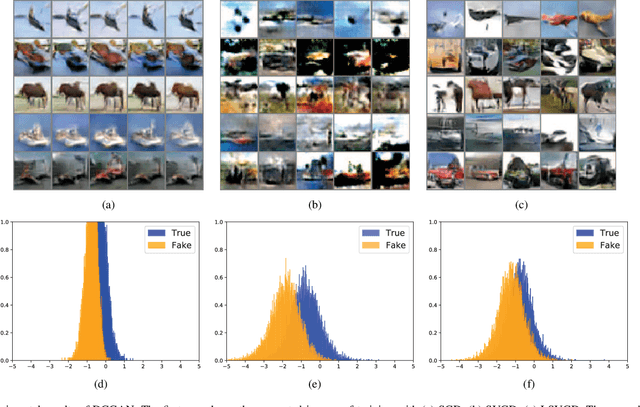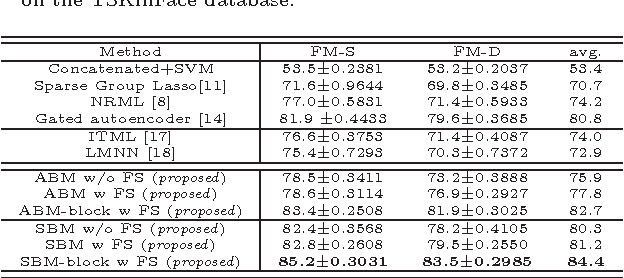Xiaoqian Qin
Stabilizing Training of Generative Adversarial Nets via Langevin Stein Variational Gradient Descent
Apr 22, 2020



Abstract:Generative adversarial networks (GANs), famous for the capability of learning complex underlying data distribution, are however known to be tricky in the training process, which would probably result in mode collapse or performance deterioration. Current approaches of dealing with GANs' issues almost utilize some practical training techniques for the purpose of regularization, which on the other hand undermines the convergence and theoretical soundness of GAN. In this paper, we propose to stabilize GAN training via a novel particle-based variational inference -- Langevin Stein variational gradient descent (LSVGD), which not only inherits the flexibility and efficiency of original SVGD but aims to address its instability issues by incorporating an extra disturbance into the update dynamics. We further demonstrate that by properly adjusting the noise variance, LSVGD simulates a Langevin process whose stationary distribution is exactly the target distribution. We also show that LSVGD dynamics has an implicit regularization which is able to enhance particles' spread-out and diversity. At last we present an efficient way of applying particle-based variational inference on a general GAN training procedure no matter what loss function is adopted. Experimental results on one synthetic dataset and three popular benchmark datasets -- Cifar-10, Tiny-ImageNet and CelebA validate that LSVGD can remarkably improve the performance and stability of various GAN models.
Tri-Subject Kinship Verification: Understanding the Core of A Family
Jul 21, 2015



Abstract:One major challenge in computer vision is to go beyond the modeling of individual objects and to investigate the bi- (one-versus-one) or tri- (one-versus-two) relationship among multiple visual entities, answering such questions as whether a child in a photo belongs to given parents. The child-parents relationship plays a core role in a family and understanding such kin relationship would have fundamental impact on the behavior of an artificial intelligent agent working in the human world. In this work, we tackle the problem of one-versus-two (tri-subject) kinship verification and our contributions are three folds: 1) a novel relative symmetric bilinear model (RSBM) introduced to model the similarity between the child and the parents, by incorporating the prior knowledge that a child may resemble a particular parent more than the other; 2) a spatially voted method for feature selection, which jointly selects the most discriminative features for the child-parents pair, while taking local spatial information into account; 3) a large scale tri-subject kinship database characterized by over 1,000 child-parents families. Extensive experiments on KinFaceW, Family101 and our newly released kinship database show that the proposed method outperforms several previous state of the art methods, while could also be used to significantly boost the performance of one-versus-one kinship verification when the information about both parents are available.
 Add to Chrome
Add to Chrome Add to Firefox
Add to Firefox Add to Edge
Add to Edge